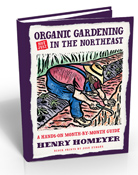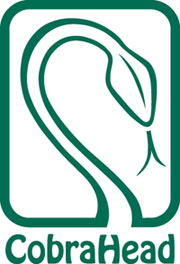Wildflowers That Are Not So Wild
Every time I travel to a far-off place I am intrigued to see what is growing in a different climate – and what I might learn about plants that I grow here that also grow under different conditions. I recently had a fabulous hike down the Rogue River Canyon of Oregon in prime wildflower season. The trip was organized and supported by Rogue Wilderness Adventures (www. wildrogue.com or 800-336-1647). Although we hiked most of the way – some 40 miles in 4 days – the trip was supported by rafts that carried our stuff (or us, if we got tired). That meant I could hike with just a day pack – and not worry about the weight of wildflower books.

coral bells (Heuchera spp.)
So what did I see? For starters, coral bells (Heuchera spp.).Coral bells are commonly sold in garden centers in the standard green-leafed form as well as lime green, orange, purple and variegated-leaf varieties. The plants generally have very thin flower stalks that stand up well above the leaves and terminate in small but handsome bell-shaped blossoms. I grow a number of varieties including a purple-leafed one that I think is called ‘Persian Carpet≠ (those pesky tags are routinely stolen by the garden gnomes). I grow Persian Carpet≠ in light shade in soil that is rich in compost – in full sun the color of the leaves tends to bleach out. I grow the standard green-leafed variety in full sun with rich, moist soil. It has orange-pink blossoms that look lovely in a vase.
Coral bells were growing in both sun and shade along the Rogue River, including some growing right out of the rock in walls that face the afternoon sun. Generally there was a little seepage at this time of year, and moss was present that also held a little water. Still, these plants (which I identified as Heuchera micrantha) are growing in a much tougher environment than those in my garden. Winters, however, are much milder out there – just a few days below freezing.
I was not surprised to see sedum growing on the rocks out there. Sedums of all sorts are used as rock garden plants here, including my favorite, Sedum rupestre “Angelina”. Angelina has chartreuse foliage, but no flowers; it≠s an excellent groundcover. The sedum (sometimes called stonecrop) I saw out there was Sedum spathufolium which had grey to green leaves, and bright yellow flowers on 3-5 inch stems. As with sedums here, this one is very drought tolerant, sometimes growing right on rocks with no apparent soil.

Iris innominata
I was surprised to see iris growing in deep shade along the Rogue River and blossoming profusely. Many sun-lovers, (and I consider iris to be a sun-loving plant) will grow and survive in shade, but bloom minimally. Not so with the iris I saw there. I identified 2 species of shade-loving iris: Iris innominata and Iris tenax. I did a Google search and found GrowsonYou, a website in the United Kingdom (http://www.growsonyou.com) that sells both species of iris. They do not offer our zone hardiness ratings, however, so they may not be viable here. This winter, when I have more time to do a more thorough Web search, I may be able to buy seeds and start my own plants, which is better than getting plants from overseas.

California poppies
I grow California poppies here from seed, and saw plenty of them in grassy, sunny meadows there. The California poppy is a very bright yellow annual poppy. I don≠t find them re-seeding for me, or not very often. Like annual poppies, they start easily from seed.

larkspur
Another annual flower that I saw there and grow here is larkspur. It is the annual form of delphinium, a perennial that many gardeners grow. Larkspur is readily available in 6-packs from garden centers, or you can start your own. I have learned not to try starting larkspur indoors in early spring, as it needs cold soil to germinate. If you want to grow it from seed, it is best to start it outdoors in the early spring. The blue of the larkspur in Oregon was truly wonderful: a bright, bold, medium to dark blue. I was surprised to see it growing in both sun and shady locations.
Wild columbine is common along the Rogue. Columbine comes in several colors, though there it is just the red columbine (Aquilegia formosa). Here I have a deep purple that is almost black, and hybrids in blues, pinks and light colors. Columbines in the wild here I see mostly growing on rocky outcroppings. It is a short-lived perennial that is easily started from seed – and often sows seeds itself. I find my columbine sends “volunteers” where I didn’t plant them.
The last of my flowers that I saw there was a lesser known perennial known as umbrella plant (Darmera peltata). It was growing right on the banks of the river, and in the river where the water was high. I planted an umbrella plant in 2009 in memory of my late sister, Ruth Anne, right next to my stream. In 2010 it limped along, but this spring it bloomed beautifully: pink flowers on tall stems that appeared before foliage in early May. And this year the foliage is big and luxuriant.
So if you travel, look to see where plants grow in their native habitats. It may help you understand that we sometimes pamper our plants too much, and they can do fine on their own.



